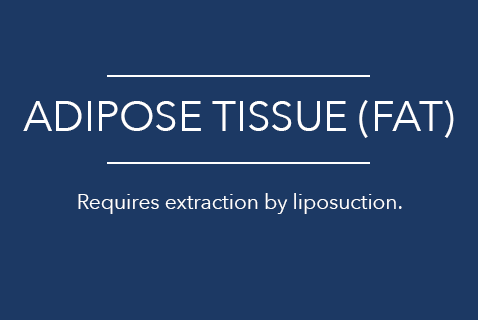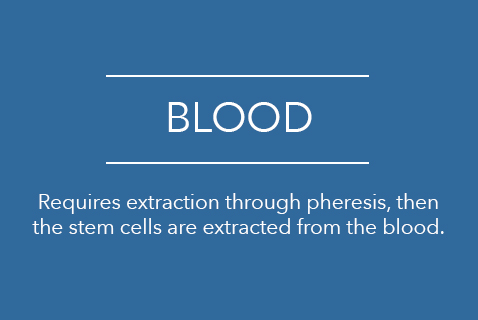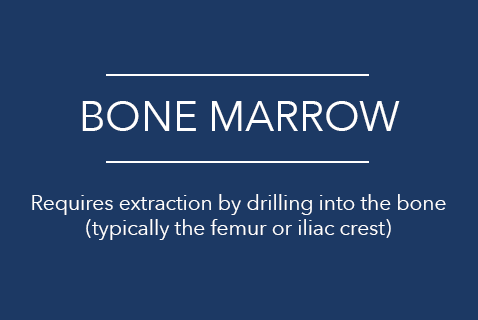What is Regenerative Medicine?
Regenerative medicine itself isn’t new — the first bone marrow and solid-organ transplants were done decades ago. Recent advances in developmental and cell biology, immunology, and other fields have unlocked new opportunities to refine existing regenerative therapies and develop new ones.
How Do Adult Stem Cells Heal?
Adult stem cells are known as “progenitor” cells. They remain dormant unless they witness some level of tissue injury, which activates them. So, when a person has a degenerative problem, the stem cells tend to go to that area of need and stimulate the healing process. But, they can only do that when they are released from the tissue that they originate from (in our case, from adipose fat tissue) and are released to find areas of injury, triggering the primary means of repair for the area of injection.
Of all stem cell sources, harvesting fat cells involves the least risk and delivers a high yeild of stem cells per cc. Adipose tissue (fat cells) is also one of the richest sources of Mesenchymal cells, or MSCs. These are the cells that can differentiate into a variety of cell types including bone cells, cartilage, and connective tissues but they also have tremendous cellular activity and release potent growth factors.
Where are Stem Cells Found?
Our Technology
Stromal Vascular Fraction (SVF)
Recent advances in stem cell science have made it possible to obtain high numbers of quality multi-potent cells from a person’s own fat, harvested by liposuction. Stromal Vascular Fraction (SVF) is a state-of-the-art technology whereby fat is processed to yield up to 500 times the number of adult mesenchymal stem cells (per cc of fat) than can be yielded from bone marrow or blood. Typically there are approximately 1 million perivascular and mesenchymal stem cells per one cc of fat.
The procedure entails performing a mini-liposuction (around 50 mL of fat tissue) typically from the abdomen, under local anesthesia. Perivascular and mesenchymal stem cells are extracted from the tissue, which are then incubated and deployed within ninety minutes or less. Under proprietary protocols, these stem cells are activated and deployed back into the patient where they secrete growth factors and paracrine effects leading to their regenerative potential. Clinical research suggests treatment success could be directly related to the quantity of stem cells deployed.
The Regeneris protocol yields high viable cell counts which is critical to ensure the best outcome and result. Injections are administered directly into areas of concern (knee, spine, scalp, etc), or can be administered intravenously.
Post-operative discomfort is minimal when followed by a minimal restriction on activity and a progressive therapy plan for recovery.
Platelet Rich Plasma (PRP)
Platelet activation plays a key role in the process of wound and soft tissue healing. In fact, your platelets are the “first responders” of wound care, initiating the critical cascade to healing Platelet Rich Plasma (PRP) raises the local concentration of platelets in the blood to above the baseline, and when activated, creates an environment which promotes healing of injured tendons, ligaments, muscles, and joints, and can be applied to various musculoskeletal problems.
PRP injections are prepared from the patient’s own blood. Once prepared, the activated platelets are injected into the abnormal tissue, releasing growth factors that recruit and increase the proliferation of reparative cells.
As early as the 1990s, PRP has been used in dental and plastic surgery. Several clinical studies have demonstrated that PRP injections have improved function and decreased pain to various levels of damage or degeneration, including elbow, wrist, shoulder, hip, knee, and ankle tendinosis. Early research is also showing promise for osteoarthritis.
The side effects of PRP injections are very limited, as the procedure utilizes the patient’s own blood. Some relative rest is needed immediately following the procedure, and is usually followed by a progressive stretching and strengthening program.
Frequently Asked Questions
+ What diseases and problems can be treated?
+ Does Regeneris Medical use embryonic stem cells?
+ How are the cells deployed into a patient?
+ How many injections are required for success?
+ Are any biological agents or growth factors added to the stem cells?
+ Why do patients request stem cell treatments?
+ What is the cost of consultation and treatment?
+ What is included in the procedure cost?
+ How long until I can expect to see improvement?
Ready to Get Started?
Discoveries in recent years have suggested that these cells have the ability to differentiate into a variety of cell types including bone cells, cartilage, and connective tissues, but they also have tremendous cellular activity and release potent growth factors. This phenomenon is referred to as stem cell transdifferentiation or plasticity. Under investigational protocols, these cells can be deployed to treat a number of degenerative conditions and diseases.














